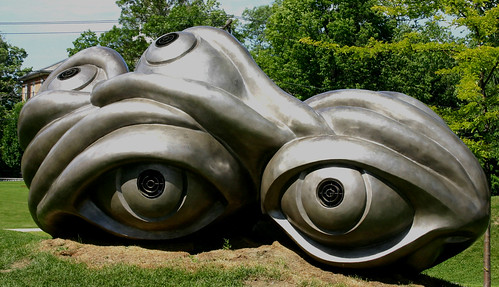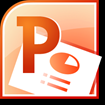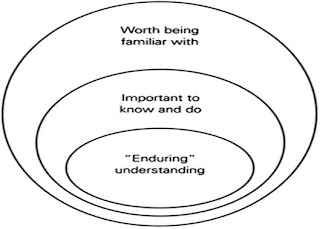Online instructors and course developers face the challenge of reflecting on a philosophical and methodological shift from behavioral to cognitive perspectives and then from objectivist to constructivist perspectives.
The familiar teaching paradigm primarily derived from objectivist and behaviorist learning perspectives considers learning as a passive process in which the teacher’s expert knowledge is transferred to the students, who are empty vessels waiting to be filled. This view assumes that being knowledgeable is determined by the accumulation of a large number of facts. Students are classified by grade levels and then sorted into ability groups. The standard classroom features the teacher at the front of the room with her back to the class, writing information on the chalkboard. The students are arranged in straight rows and work individually to complete worksheets and questions from the textbook. They are to sit silently, passive and in competition with each other. Another scenario has the teacher, again standing at the front of the class, yet this time he is pontificating and dispensing his vast knowledge base to his students. The assumption is that anyone with expertise in his/her field can teach. Standardized tests with multiple choice, short answer, and true/false options provide quantitative measures of learning.
Research into how the brain works and theories which state that we construct knowledge from our social interactions and experiences challenge the traditional approach. The constructivist paradigm represents a student-centered approach that entails a shift in roles both for the teacher and for the student. Knowledge is actively constructed, discovered, transformed, and extended by the students. According to Piaget, learning is more than the accumulation of content; learning involves different kinds of activity to help learners construct links between new content and their prior knowledge. The teacher’s role is to support and develop students’ competencies and talents. Vygotsky asserted the importance of social interactions in learning—engaging and dialogue with others and gaining assistance from others. Instead of impersonal relationships among students and between teachers and students, education should be a personal transaction among students and between students and teachers as they work together. Instead of an individualistic and competitive learning environment, cooperative learning in the classroom and cooperative teams among faculty should be the norm. Learners construct their own knowledge by being actively immersed in a situation that provides social interactions, tools, content, and other information allowing them to explore, invent, create, and synthesize in an increasingly autonomous manner. Therefore, assignments represent more authentic, real-world applications such as case studies, problem-based or project-based learning, simulations, and cognitive apprenticeships. There is acknowledgment that teaching is a complex application of theory and research that requires considerable training and continuous refinement of skills and procedures.
The familiar teaching paradigm primarily derived from objectivist and behaviorist learning perspectives considers learning as a passive process in which the teacher’s expert knowledge is transferred to the students, who are empty vessels waiting to be filled. This view assumes that being knowledgeable is determined by the accumulation of a large number of facts. Students are classified by grade levels and then sorted into ability groups. The standard classroom features the teacher at the front of the room with her back to the class, writing information on the chalkboard. The students are arranged in straight rows and work individually to complete worksheets and questions from the textbook. They are to sit silently, passive and in competition with each other. Another scenario has the teacher, again standing at the front of the class, yet this time he is pontificating and dispensing his vast knowledge base to his students. The assumption is that anyone with expertise in his/her field can teach. Standardized tests with multiple choice, short answer, and true/false options provide quantitative measures of learning.
Research into how the brain works and theories which state that we construct knowledge from our social interactions and experiences challenge the traditional approach. The constructivist paradigm represents a student-centered approach that entails a shift in roles both for the teacher and for the student. Knowledge is actively constructed, discovered, transformed, and extended by the students. According to Piaget, learning is more than the accumulation of content; learning involves different kinds of activity to help learners construct links between new content and their prior knowledge. The teacher’s role is to support and develop students’ competencies and talents. Vygotsky asserted the importance of social interactions in learning—engaging and dialogue with others and gaining assistance from others. Instead of impersonal relationships among students and between teachers and students, education should be a personal transaction among students and between students and teachers as they work together. Instead of an individualistic and competitive learning environment, cooperative learning in the classroom and cooperative teams among faculty should be the norm. Learners construct their own knowledge by being actively immersed in a situation that provides social interactions, tools, content, and other information allowing them to explore, invent, create, and synthesize in an increasingly autonomous manner. Therefore, assignments represent more authentic, real-world applications such as case studies, problem-based or project-based learning, simulations, and cognitive apprenticeships. There is acknowledgment that teaching is a complex application of theory and research that requires considerable training and continuous refinement of skills and procedures.



 ree
webinar series--learn how to eliminate Death by PowerPoint and make
your presentations come to life. Listen to guest experts share their
best techniques and answer your questions!
ree
webinar series--learn how to eliminate Death by PowerPoint and make
your presentations come to life. Listen to guest experts share their
best techniques and answer your questions!